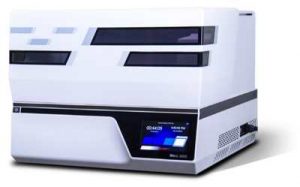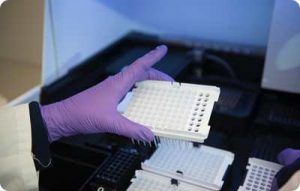Gibson Assembly Advances Field of DNA Digital Storage
For nanopore storage, reporting that method was effective in retrieving information stored in DNA
This is a Press Release edited by StorageNewsletter.com on October 10, 2019 at 2:19 pmResearchers from the University of Washington and Microsoft Corp. announced a DNA assembly strategy for nanopore storage, reporting that the Gibson Assembly method was effective in retrieving information stored in DNA.
The strategy decoded a picture of a space shuttle, the Earth, and Leonardo da Vinci’s Vitruvian Man.
Todd R. Nelson Ph.D., CEO, SGI-DNA, Inc., stated: “We are excited to see SGI-DNA’s technologies being applied across multiple disciplines and will continue to expand our BioXp Gene Builder and reagents portfolio to include next gen tools for DNA storage.“
A paper describing this research, ‘DNA assembly for nanopore storage readout,‘ was published July 3rd in journal Nature Communications by authors Randolph Lopez, Yuan-Jyue Chen, Siena Dumas Ang, Sergey Yekhanin, Konstantin Makarychev, Miklos Z. Racz, Georg Seelig, Karin Strauss, and Luis Ceze.
“Applying Gibson Assembly to information retrieval from DNA was instrumental in addressing nanopore readout bottlenecks by producing long DNA constructs and increasing data output. This leads to higher readout performance and better resource usage,” said Dr. Luis Ceze, Professor, University of Washington, and senior author, Nature Communications manuscript.
DNA storage has been a growing area of interest due to its encoding power with a capacity to store more than 200PB of data per gram of DNA.
The Gibson Assembly Method enables the creation of DNA that’s accessed, decoded and read, overcoming the challenges of retrieving information from DNA. In their manuscript, the team at University of Washington demonstrated that using the Gibson Assembly method, in combination with the compact nanopore sequencing platform, allowed them to retrieve and decode a total of 1.67MB/s of data stored in short sections of synthetic DNA. This accomplishment represents the power of combining big data with DNA storage miniaturization.
BioXp 3200 DNA printer system

Daniel Gibson, Ph.D., CTO, SGI-DNA and inventor of Gibson Assembly, commented, “It’s incredible to see the revolutionary developments in DNA storage that have emerged from recent advances in reading and writing DNA. Gibson Assembly is being widely adopted and is on the forefront of many exciting new technologies, everywhere from personalized medicine to big data. Our continued and aggressive development of fully automated applications for the BioXp Gene Builder, such as Multi-Tile Assembly and Cloning (MTAC), place these capabilities into the hands of scientists for the first time.“
The company’s landmark discoveries in DNA storage began in 2008 with the creation of the first synthetic genome designed to have its architect’s names stored in it. Later in 2010, the genome of the first synthetic cell was designed to include the names of its authors and some famous quotations. In the latter work, a new code was designed and implemented to be biologically innocuous to an organism carrying that DNA. Unique sequences allow signatures, ‘barcodes’ and other information to be tracked within the DNA sequences of any synthetic sequence or organism, providing nano-level quality control of DNA products.
The Gibson Assembly Method is available under commercial license.
Resource:
BioXp 3200 Gene Builder and its applications
Read also:
R&D: DNA Assembly for Nanopore Storage Readout
Assembly strategy is generalizable to any application that requires nanopore sequencing of small DNA amplicons.
July 15, 2019 | Press Release














 Subscribe to our free daily newsletter
Subscribe to our free daily newsletter
